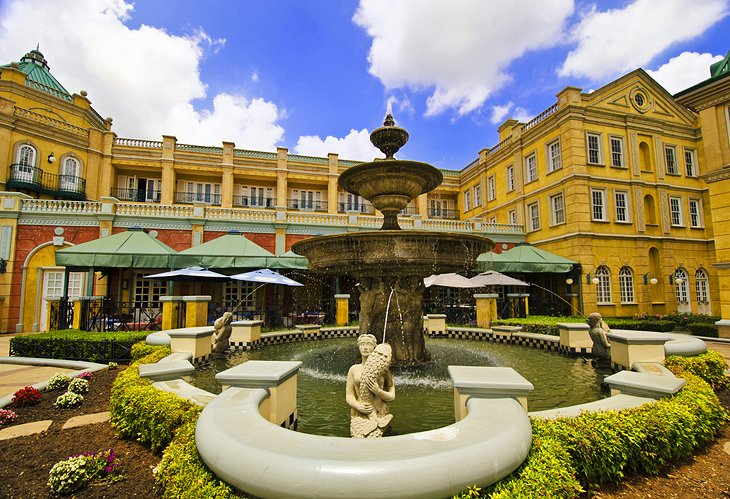The Single Strategy To Use For Johannesburg North Attractions
The Single Strategy To Use For Johannesburg North Attractions
Blog Article
The Facts About Johannesburg North Attractions Revealed
Table of ContentsThe Only Guide to Johannesburg North AttractionsThe Of Johannesburg North AttractionsThe Greatest Guide To Johannesburg North AttractionsSome Ideas on Johannesburg North Attractions You Need To KnowJohannesburg North Attractions Fundamentals ExplainedThe Basic Principles Of Johannesburg North Attractions Not known Details About Johannesburg North Attractions
You must keep safety in mind and travelers need to remain sharp at all times when in unknown surroundings. Talk with the citizens when you are in community to locate out about the area you are remaining in. Johannesburg North attractions. When on the street (this doesn't put on mall and other safe and secure atmospheres) best basic advice is to attempt your finest to look like a local and to stay clear of displaying any type of type of wide range
Unknown Facts About Johannesburg North Attractions
Professor Revil Mason O. J. (Thomson, 1946) checked out the Witwatersrand's pre-colonial background. His archaeological work blew up the 'em pty land' misconception, according to which the region was lacking human habitation prior to the arrival of European settlers. In his magazines Prehistory of the Transvaal: A Document of Human Task (1962) and Origins of Black Individuals of Johannesburg and the Southern Western Central Transvaal AD 3501880 (1986 ), Professor Mason demonstrated the degree of social and financial growth in the area prior to Europeans set foot here.

8 Simple Techniques For Johannesburg North Attractions
In 1878, David Wardrop found gold in quartz blood vessels at Zwartkop, north of Krugersdorp. In 1881, Stephanus Minnaar came throughout gold on the ranch Kromdraai, near the Cradle of Humankind.
In March 1886, an outcropping (soon to be called the Key Reef) was found, rather fortunately, on Gerhardus Oosthuizen's ranch Langlaagte. Some state that the Lancastrian coal miner George Walker discovered this coral reef. An additional travelling English miner, George Harrison (who had previously worked in Australian mines) obtained a prospecting licence in respect of Langlaagte in May 1886.
He decided to proceed in a quest for greener fields, and disposed of his Langlaagte case for the baronial amount of 10. Alas: under lay the wealthiest goldfield ever before located. The exploration of this abundant auriferous coral reef provoked a gold rush that signalled the end of bucolic tranquillity in the website here southerly Transvaal.
It would certainly, within 6 years, come to be the biggest town in southern Africa. Within a decade, it would certainly make the Z. A. R. till after that an anarchical and insolvent little state the most affluent country in Africa. By the turn of the century, the Z. A. R. was to surpass Russia, Australia and the USA of America to end up being the world's leading gold manufacturer, producing more than a quarter of the globe's gold.
Getting The Johannesburg North Attractions To Work
It was referred to as Ferreira's Camp, named after Colonel Ignatius Ferreira. He was a Boer adventurer upon whom the British authorities had actually bestowed the standing of Buddy of one of the most Identified Order of St Michael and St George (entitling him to the post-nominal letters C. M. G.) in thankfulness for his role in the battle that had deposed the Pedi king Sekhukhune in 1879.
Two other camps were developed: Meyer's Camp on the farm Doornfontein, and Paarl Camp. The latter was nicknamed Afrikander Camp; lots of individuals from the Cape Colony resolved there.

Some Known Factual Statements About Johannesburg North Attractions
This name obtained currency by word of mouth, such that the State Assistant verified the name to the Mining Commissioner on 9 October 1886. Stands in the town were auctioned on 8 December 1886. While some stands were cost 10, others were knocked down for as low as sixpence.
Two years later on, these erven were to change hands for as long as 750 each. The tented camps dwindled as a dorp of corrugated iron buildings developed and increased north of the mines located along the Key Reef Roadway. Areas such as Jeppe's Community (where working-class immigrants erected their homes) and Doornfontein (where the affluent new 'Randlords' began to create their opulent houses) were soon contributed to the ever-expanding map of the community.
The Facts About Johannesburg North Attractions Revealed
Aside from the road names, there were no signs of Johannesburg being positioned in a Dutch-speaking nation. Many years later, C. W. Kearns O. J. (one of the first children signed up at St John's University dig this in 1898) go to this site would certainly recall: 'An odd truth concerning Johannesburg was that, although it was in the [Boer Republic], almost every person talked English and even the Government slaves resolved one in English, unless they were initial dealt with in the Taal (or Reduced Dutch)'.
Britain had an interest in ensuring optimal problems for gold manufacturing on the Witwatersrand, and that the gold was exported to London rather than Berlin a vital rendered all the more clamant by the Z. A. R.'s raising toenadering with Germany. Mine proprietors were on a collision training course with Head of state Kruger, whose policy of monopolistic giving ins (usually provided to his cronies) stopped mining business from procuring products of materials (especially dynamite) and work by themselves, cheaper terms
Some Of Johannesburg North Attractions
In 1890, the Volksraad had limited the franchise to white guys that had actually lived in the Z. A. R. for fourteen years or longer, hence disqualifying many of the immigrants (who occurred to be the significant factors to the fiscus). Nevertheless, frustration for the vote was a simple pretense for advertising a different program; the majority of uitlanders regarded themselves as momentary site visitors and had no intention of staying in the Z.
Report this page